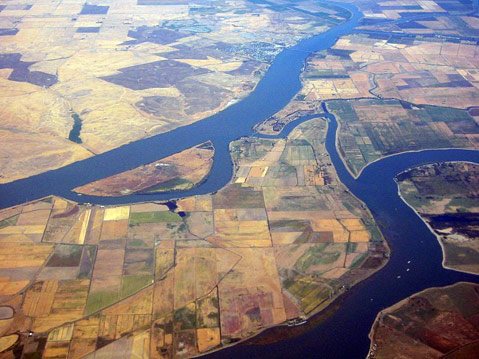The Waterless State Water Solution
Twin Tunnels Project Conveys Promises, Not Water

There’s no way around it: Santa Barbara is on the State Water Project’s hook. The question is whether we willingly sink the steel deeper.
By now, most of us understand the essential details of our dilemma. In the 1990s, the Department of Water Resources (DWR) promoted construction of the Coastal Branch, an aqueduct designed to deliver water from the State Water Project to the Central Coast. Santa Barbara County took the bait. After all, it looked like a good deal. DWR promised the project would cost no more than $270 million and would deliver 97 percent of contracted water allotments.
So what happened? By the time the project was completed, construction, maintenance, and debt service costs had ballooned to $1.76 billion. Instead of 97 percent deliveries, the Coastal Branch has averaged about 36 percent of contracted allotments to Santa Barbara’s South Coast water agencies.
In other words, the Coastal Branch was big on promises but short on follow-through. Anticipating its profound shortcomings, C-WIN (California Water Impact Network) vigorously opposed the Coastal Branch. We advocated for a far more flexible and fiscally responsible approach, one based on conservation, recycling, and local sources.
But we also recognize that we can’t rewrite the past. As things stand, we are now saddled with the Coastal Branch. C-WIN is not advocating shutting it down — it is too late for that as we would still remain liable for the debt incurred by the project.
So we have to live with the Coastal Branch. That doesn’t mean, however, that we should wade deeper into the DWR quagmire. Right now the agency is urging early renewal of Santa Barbara County’s State Water Project contract, which expires in 2038. But such a move would be the worst possible mistake the county could make. Why? Early contract renewal would give the Brown administration license to issue revenue bonds for the Twin Tunnels project, an ill-conceived scheme to shunt water from Northern California under the Sacramento/San Joaquin Delta to the Southern California.
A multitude of reasons argue against the Twin Tunnels. The tunnels will deprive the Delta of fresh water, devastating both agriculture and fisheries. Moreover, DWR hasn’t even decided on a final design for the project. The dimensions of the scheme are by no means clear and that means neither state officials nor stakeholders have any real grasp on their ultimate efficacy.
But for Santa Barbara residents, the primary reason is money. We can’t afford such a gargantuan barrel of pork.
DWR claims the Twin Tunnels will “only” cost $25 billion. This is absurd, deeply disingenuous — or both. State agencies typically underestimate the cost of ambitious public works projects. Remember that the Coastal Branch ended up costing more than six times DWR’s original estimate. The new eastern span of the San Francisco Bay Bridge is a more recent example of extravagant state project cost inflation. In 1997, CalTrans claimed the new bridge could be built for $1.3 billion. It ended up costing taxpayers $6.4 billion — fully five times the official estimate.
So we would be suckers to think the Twin Tunnels would be any different. Forget the $25 billion cited by Governor Brown and DWR. The best estimates by independent analysts have put the final figure at $69 billion. That’s $69 billion that will come from the bank accounts of ratepayers, by the way. That includes you, me — and everyone else who lives in Santa Barbara County and pays a water bill.
And here’s the kicker: Urban ratepayers are very likely going to have to pay far more than Central Valley corporate farmers, who will receive their water from the project at deeply discounted rates.
Such massive debt threatens the economic security of both communities and individuals. That’s bad enough. What’s even worse is that this would be money for nothing. The Twin Tunnels won’t increase water deliveries to the Central Coast because they are a water conveyance system. They can only deliver water when and if it is available — they can’t produce it.
Annual snowpack in the Sierra Nevada and Trinity Mountains yields about 29 million acre feet of consumable water for California annually. This may sound like a lot, but it isn’t enough to meet demand. Water right claims are 153.7 million acre feet — more than five times the water than actually exists. The Twin Tunnels don’t change this stark and dispiriting fact. In fact, the situation will only worsen. All reliable climate change models indicate state snowpack will decrease in the next 100 years. That means there will be less water to export and less reason than ever for white elephants like the Twin Tunnels.
So while C-WIN reluctantly stands by continued operation of the Coastal Branch, we adamantly oppose early State Water Project contract renewal — and the de facto approval of the Twin Tunnels that such a move implies. As always, we support pragmatic and cost-effective measures to guarantee our water security: conservation, recycling, development of local surface sources, rainwater harvest, groundwater desalinization, and activation of the Charles Meyer ocean desalinization plant during periods of drought.
Carolee Krieger is president and executive director of the California Water Impact Network (C-WIN) located in Santa Barbara.



